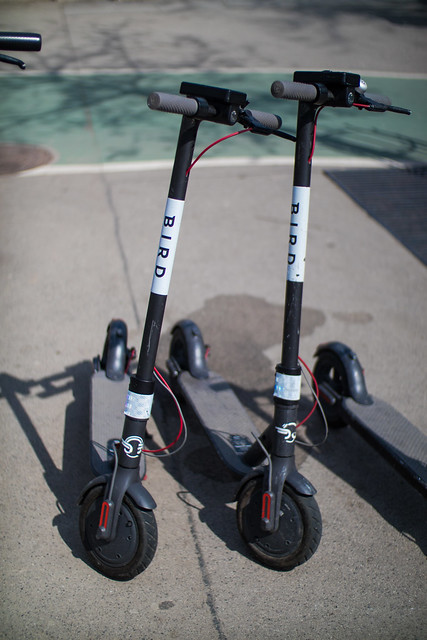
The transportation industry has changed in the last decade largely due to apps like Uber and Lyft. However, a new system of transportation has changed the way people get around: electric scooters.
One notable company, Bird, launched in 2017. By having an app on their phone, qualified users (18+, with a valid license and credit card) can scan a QR code via phone camera and scooter to their destination. The scooters cost $1 for initial access and then an additional 15 cents per minute, making scooters an environmentally friendly and affordable option for consumers. Lexi Sydow, AppAnnie’s market insights manager, told the San Francisco Business Times, “Chances are if you’re in the ride-sharing economy, then you’re willing to try out some of these newer technologies like scooters.”
Along with Bird, more companies have generated their own scooter system, which has increased the amount of options in popular metropolitan areas. Other notable electric scooter brands are Lime and Spin, which have taken the same guerrilla tactic used by Bird scooters.
The unique aspect about this form of transportation is that the companies have not gone through an extensive public advertising plan. Very little to no ads have been visible on social media or other sources, which is different from Uber and Lyft. The main way these brands obtain exposure is from consumers seeing the physical scooters. In addition to this, around many cities or college campuses, the use of said scooters has been advertised through consumers themselves on social media and word of mouth.
While this form of transportation seems ideal to those on college campuses or in downtown areas, unfortunately there are some negative aspects that were not well thought-out prior to foisting the scooters on the public.
First, there is a safety concern for those using the scooters in certain areas. It is difficult because cities have not fully established laws about whether or not such devices should be used on sidewalks or in bike lanes. This being said, the confusion can lead to accidents with bikers, cars or even pedestrians. An article by the Los Angeles Times is full of narratives of people who have been injured in a scooter-related accident. From the number of injuries, these companies are at risk for lawsuits.
Secondly, these companies are facing issues with major cities because they do not have licensing to allow for “docking,” meaning as of now scooters can be parked anywhere on the streets. Certain cities have even considered a temporary ban in order to go through logistics about riding laws. While scooter companies have received complaints, they have done minimal to no work with cities and consumers to ensure their reputation stays intact.
Though convenience is an extremely beneficial concept to the population, it is necessary for electric scooter brands to rethink the way they handle their crises in order to maintain and build up their reputation to the public. Looking to other crisis communication examples, like the Tylenol crisis of 1982, would enable them to grasp why consumers dislike their company and offer insight on how to fix the issues presented.
